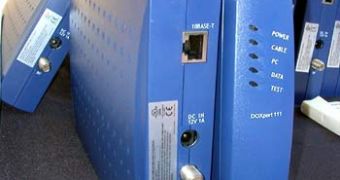Comcast managed to stun everyone as they presented the new Internet speed plans for this year during a conference at the Consumer Electronics Show. Comcast CEO Brian Roberts stated that the company "will show the two-way, fiber-optic-based network we built is ready for the next generation" of TV, phone and Internet products.
The company's innovations in the Internet-over-Cable networking are alleged to boost data transfers up to 160 Mbps. Moreover, few of those present at the conference could accept the fact that the president of the largest cable company in the world would admit that cable boxes are already obsolete.
Brina Roberts was the first cable industry executive in the history to take the floor at the CES. The Comcast CEO announced the beginning of an "open" cable services platform called Tru2way, which will bring the company's integrated services into a plethora of consumer electronics devices, including HD television sets.
The Tru2Way-enabled consumer devices will be ready to get the interactive cable services out-of-the-box. Comcast has already tied technology partnerships with Motorola, TiVo, Intel, Samsung Electronics, Microsoft, LG Electronics, Panasonic, Cisco Systems, and Sun Microsystems, and the first Tru2Way devices will become available until the end of the year.
"It's a totally different business model," Roberts said. "Virtually the entire cable industry will support Tru2way by the end of this year." By that time, supported devices will already be available, he said.
The promised speed of 160Mbps down / 120Mbps up will be possible with the advent of the DOCSIS 3.0-compatible cable modems and networking equipments. Currently, the company provides Internet services at speeds that barely match 16 Mbps.
Comcast is also experimenting with Wideband, a faster option that the common Broadband. The technology is alleged to allow users to download a 2-hour HD movie in about 4 minutes. The wideband specifications include four or more standard analog channels at once to boost network traffic up to 100 megabits per second.

 14 DAY TRIAL //
14 DAY TRIAL //